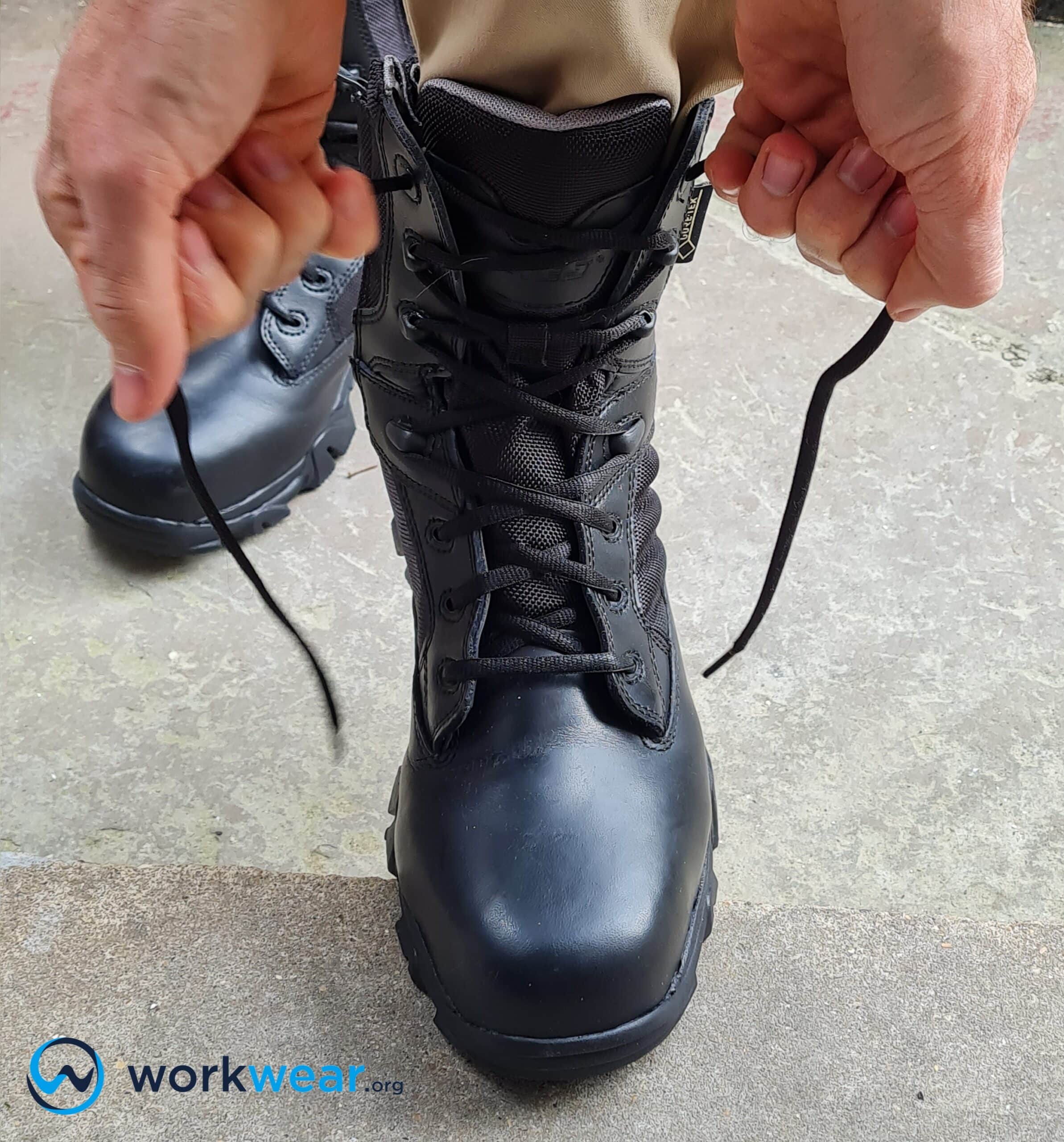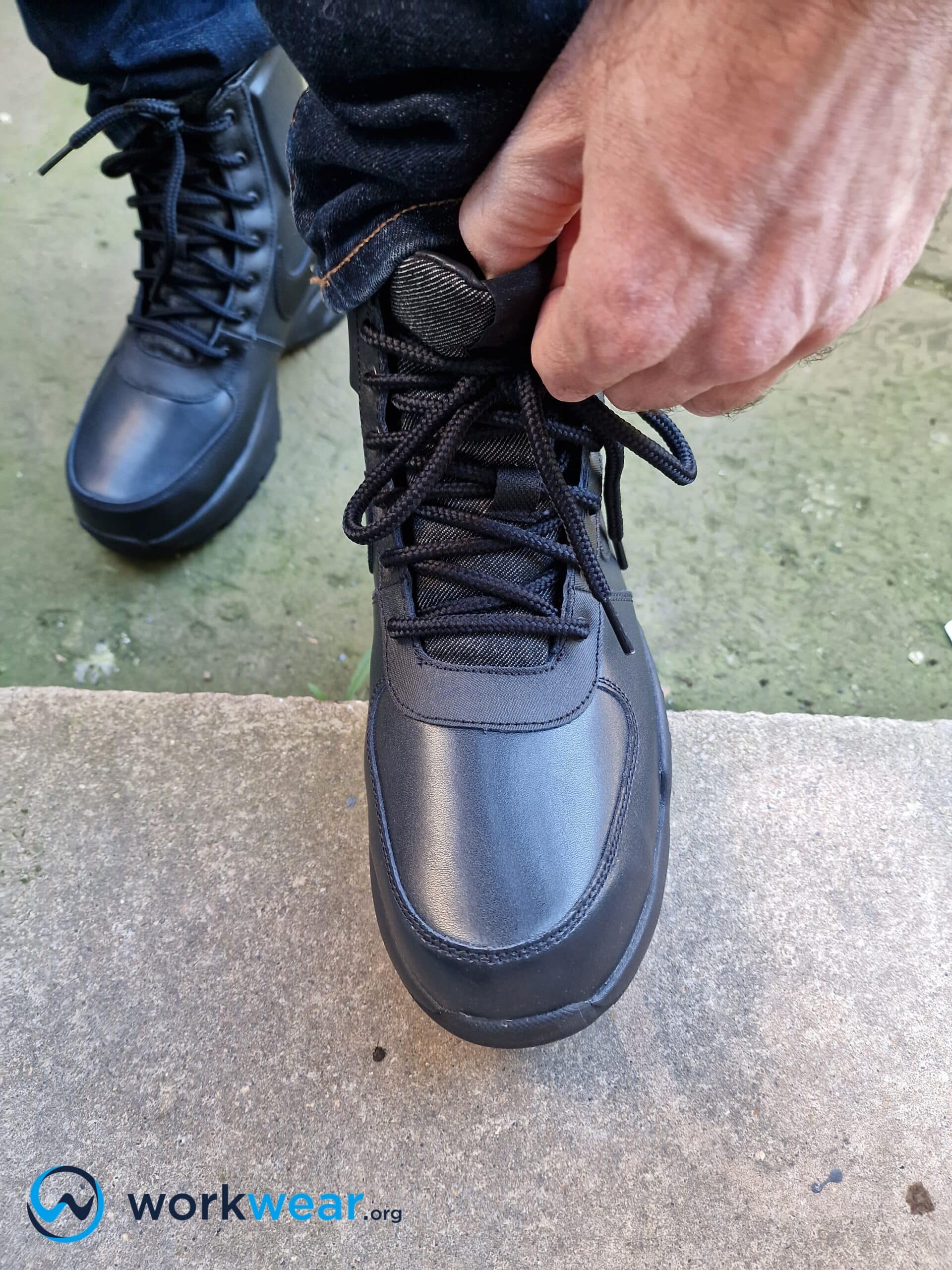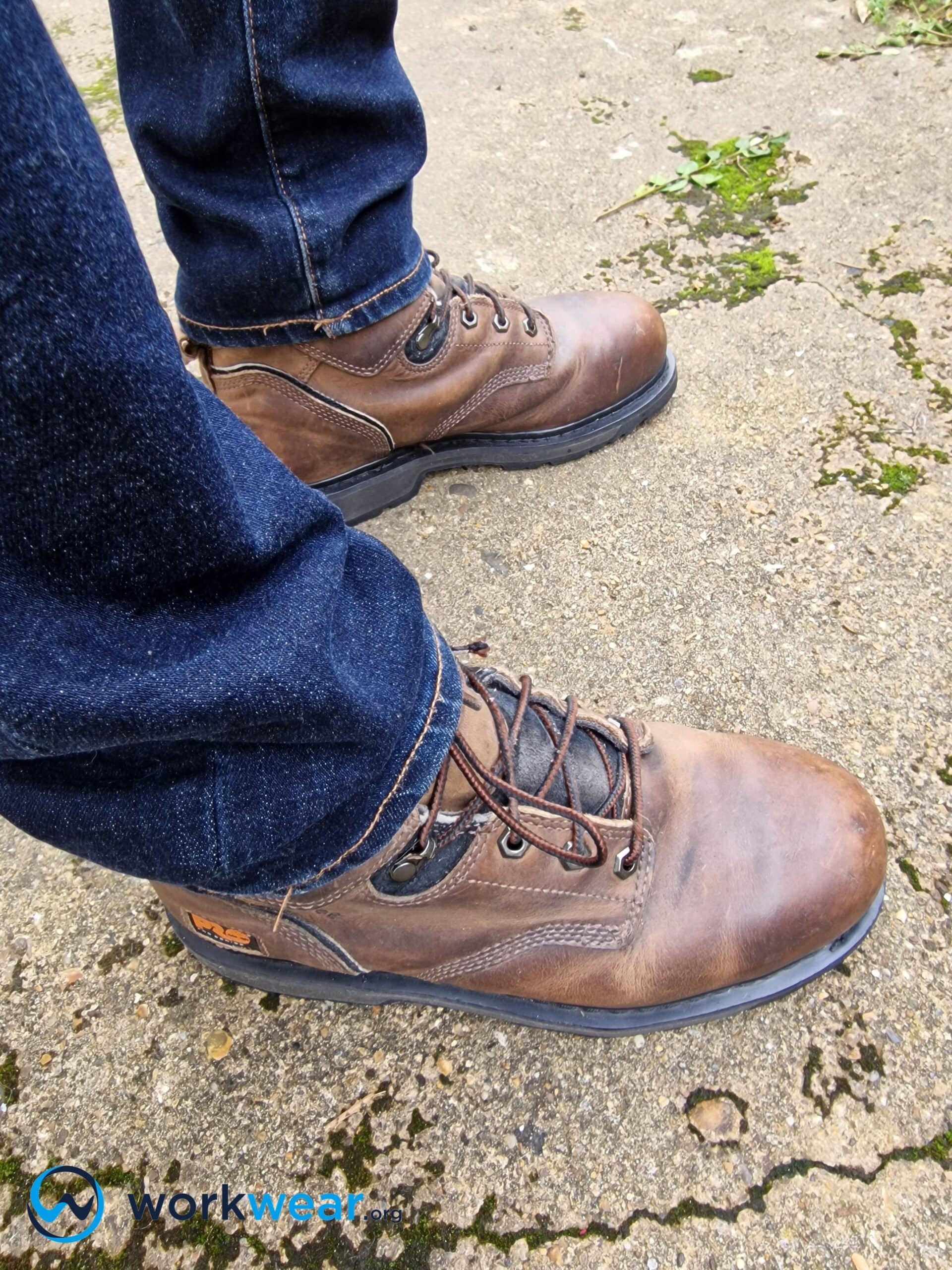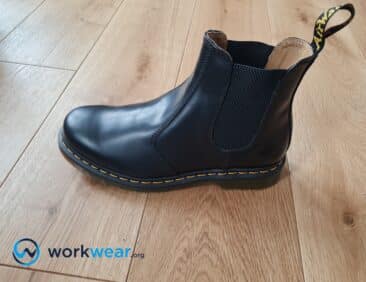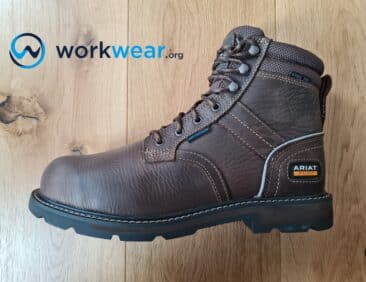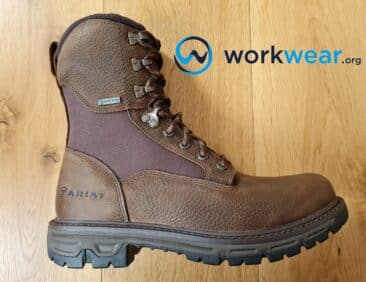How Should Work Boots Fit? Should they be loose or tight?
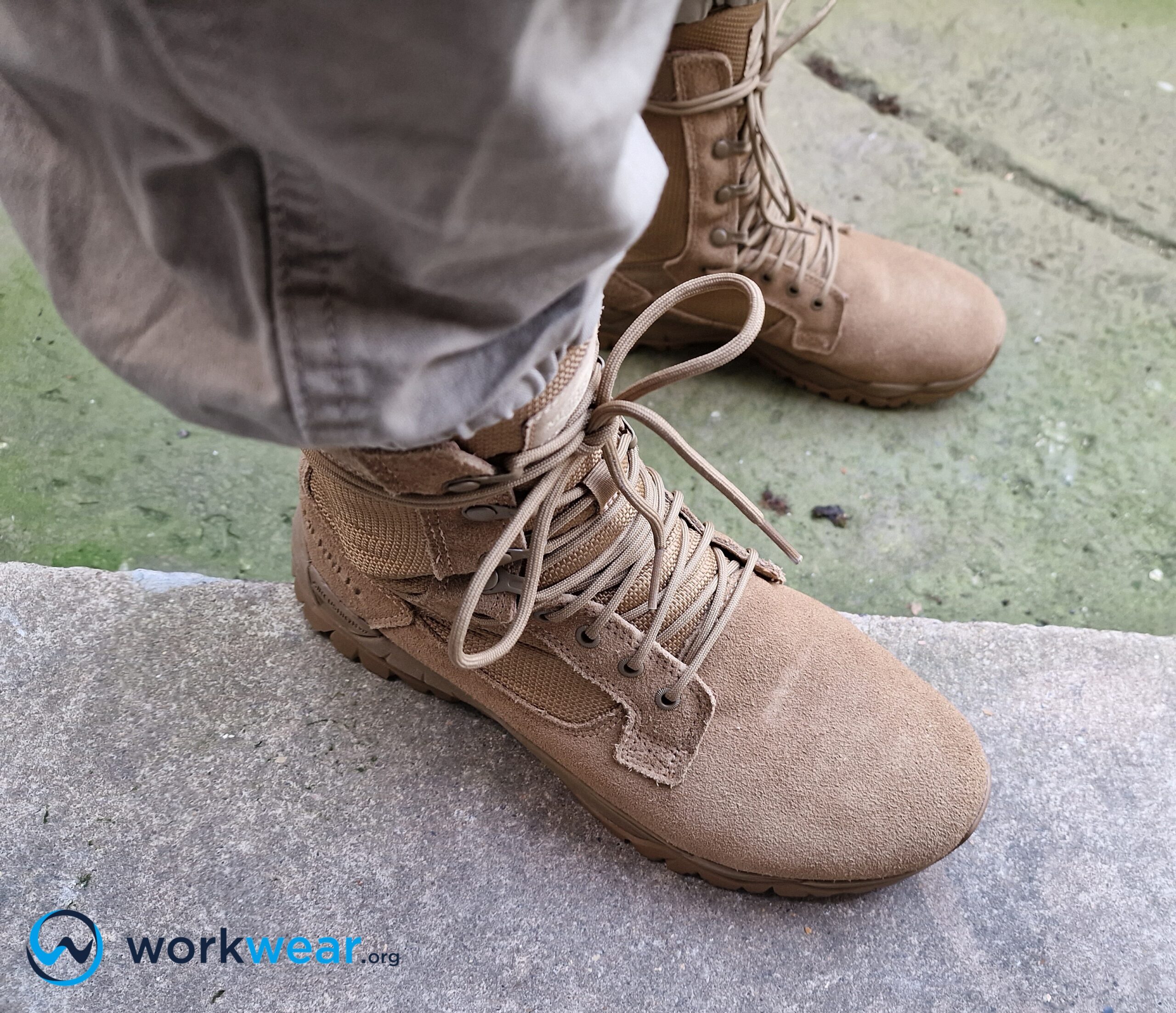
Work boots are built to support your feet, so you can walk more comfortably without sacrificing your efficient movements while on the job. But if the work boots don’t fit properly, you won’t be able to take full advantage of the boots’ remarkable features. An incorrect fit can result in painful walking, with the boots either tightly pinching or loosely moving around your feet while you try to do your tasks. Ill-fitting boots can also be safety risks as they can cause you to stumble and lose your balance, which can cause accidents in the workplace.
Finding the right balance of snugness and spaciousness will deliver the perfect fit for your work boots, enabling them to provide maximum performance benefits while ensuring a comfortable and stable walking experience in different work environments.
Key Takeaways
- Work boots that fit properly will deliver maximum benefits when it comes to comfort, performance, and support. This is why choosing boots that are neither too loose nor too tight is important.
- Extremely tight work boots can feel very stable and secure – but they can painfully chafe against the skin, pinch the toes and cause cramping, won’t easily flex with the feet’s movements, and tend to overheat.
- Too-loose work boots easily accommodate thick socks and allow more air to enter, enabling the feet to move more naturally. However, they don’t provide ample support, tend to slide off uncontrollably, can cause uncomfortable chafing, and allow debris to come in.
- To get the proper fit, it’s best to try on work boots later in the day when the feet are at their largest, as they tend to swell throughout the day. Try on footwear with the same pair of socks you plan to use with your new work boots, and walk around with both boots on (and not just one).
- Walk around to test if the work boots are flexible enough to promote comfortable mobility. It’s also important to check if the heel and toe areas are snug but still have enough space to allow comfortable walking.
Tight-Fitting Work Boots
Work boots that are properly snug are ideal because they help in more stable walking, especially when navigating tricky surfaces.
With the right level of snugness, the boots can provide ample support to keep the feet supported without developing pain.
However, if the boots are too tight, they can bring a great deal of discomfort – which isn’t something you want while working on your feet all day.
This is why it’s important to ensure that the boots are snug but not too tight so that they start feeling uncomfortable and restricting natural mobility.
Key Advantages of Tight-Fitting Work Boots
Secure fit
Work boots that fit snugly are more securely held in place, so they’re less likely to slip off while you’re walking.
With the boots held tightly, you won’t need to worry that your feet will accidentally slide out, especially when you’re walking quickly to finish the required tasks.
Can improve stability while walking
Tight-fitting work boots are better at keeping the feet in their secure positions than loose-fitting boots.
The boots’ tight fit over the feet helps maintain their stability, so they don’t easily twist or move out of the proper position, even when walking quickly over rough or wet ground conditions. In addition, the snugness of the boots can prevent unintentional foot movement that can compromise a stable walking experience.
Key Disadvantages of Tight-Fitting Work Boots
Toes will feel pinched and cramped
Work boots that are too tight can squish the toes in place. This results in great pain, especially when the boots are used for walking continuously for hours.
Without enough space to allow the toes to wiggle as needed, the feet can more quickly cramp inside the extremely tight work boots.
The feet won’t flex properly
Extremely tight boots will prevent the feet from flexing normally. This leads to awkward movements as the feet try to compensate for the restrictions from the lack of space to flex naturally. Walking can feel unnatural and unsteady, which can compromise comfort as well as productivity in the workplace.
Painful skin chafing
If the work boots are too tight, the inner portion will continuously rub against the skin since there’s no space in between.
This can result in blisters and painfully raw skin when the boots are used for walking or moving around the work area for most of the day.
Feet can feel extremely hot
Too-tight work boots don’t allow a lot of air to come in and circulate. This makes the interior prone to an overheated feeling, especially if the boots are used for long periods in humid or hot surroundings.
Loose Fitting Work Boots
In theory, work boots that fit loosely may seem comfortable as they provide enough space for the feet to flex naturally. In reality, too much space inside the boots causes them to become uncomfortable as well and even contributes to issues regarding stability.
Extremely loose work boots don’t stay firmly in place, so they’re always at risk of slipping off and causing an unstable feeling while walking, especially when going over tricky surfaces.
Key Advantages of Loose-Fitting Work Boots
Can fit thick socks
Loose-fitting work boots most likely have more than enough space to accommodate thick socks.
This is a great advantage for people who prefer thick socks for comfort and support, although there may still be stability issues even with the socks in place to tighten the boots’ fit.
More air can come in
With generous space around the feet, more air is allowed to come in and circulate.
This can be helpful when working for long periods in high-temperature settings, where overheating can be a problem for too-tight or non-breathable work footwear.
Feet can move more freely
Spacious work boots allow the feet to move freely without the painful pinching caused by tight footwear.
With enough room to flex as needed, the feet can feel more comfortable while walking or standing, but the lack of support from loose work boots can compromise comfort.
Key Disadvantages of Loose-Fitting Work Boots
Boots won’t give enough support
With too much space inside loose work boots, the feet don’t get the support they need to maintain stable walking. In addition, the excessive space prevents the feet from sustaining their proper positions inside the boots, making them move unintentionally.
This can cause great instability, compromising safety when walking around the work area.
Can cause painful chafing
Tight footwear isn’t the only culprit for chafing.
Work boots that are too loose can also cause painful chafing, as the feet aren’t secured in place and instead are left to move uncontrollably. This makes the feet more prone to rubbing uncomfortably against the interior of the boots, with nothing to anchor them in their proper positions.
Debris can easily get in
The extra space allows small pebbles, dirt, and other debris to easily get into the work boots. This can be very annoying, especially when working outdoors or in work settings where a lot of small bits and pieces can slip into the footwear.
The roominess of the work boots also allow the small objects to move around, causing pain when they start to rub or poke into the skin.
Boots can be removed unintentionally
Work boots that are too loose don’t hold the feet in secure positions, so they tend to slide out from time to time. This can be embarrassing and inconvenient as you need to pause and push your feet back in before you can continue walking and doing your job.
Extremely loose boots can also become safety hazards in the workplace as they can cause tripping if left behind and caught on nearby objects.
Comparison Table
| Boot Type |
Pros |
Cons |
|---|---|---|
| Tight-Fitting Work Boots |
|
|
| Loose-Fitting Work Boots |
|
|
How to Get the Right Fit for Work Boots
- Shop for new work boots in the evening or at least late in the afternoon. Your feet tend to swell as the hours go by, so trying on footwear later in the day can help you choose the proper fit. If you try on boots in the morning, the same pair that fit comfortably might feel too tight later in the day. However, it’s important to choose boots that have a comfortable fit throughout the entire day.
- Try and walk around with both boots on. Avoid choosing a pair when you’ve only tried one boot on – something that’s tempting to do when you’re pressed for time. Try both boots to ensure they fit properly since it’s common to have one foot slightly smaller than the other.
- Check to see if your heel stays in its proper position while you walk. The boot should keep the heel firmly in place so it doesn’t slide out when you walk. At the same time, the heel should also not chafe painfully against the back of the boot. The heel area should feel snug while still allowing comfortable movement.
- Make sure that your toes have enough space to wiggle comfortably. You can check this by pushing your foot forward until the longest toe is in direct contact with the tip of the boot. You should be able to insert a finger easily in the space formed between the back of the boot and your heel to ensure that your toes have ample wiggle room.
- Walk around to determine if the boots allow your feet to flex naturally. This will ensure that the boots won’t restrict your movement or cause discomfort when you walk.
- When shopping for boots, wear the same pair of socks you plan on using with the new footwear. This gives you a good idea about how the boots will feel when you regularly wear them using the socks you prefer and use.
Conclusion
Work boots need the right fit to deliver the superior comfort, support, and stability needed while on the job. If boots are tight, they can fit securely over the feet and offer improved stability while walking – but they can cramp and pinch the toes, cause painful chafing, overheat the feet, and restrict comfortable flexing needed for natural mobility. Meanwhile, loose-fitting work boots allow more air to come in and for the feet to move more freely while offering enough room for thick socks.
FAQs
- Will it be best to go for a larger size if I have wide feet?
- Not always. The next larger size may have the right width to accommodate your foot, but it can be extremely long, which can cause discomfort and an unstable fit. Look for brands that offer wide-fit options, such as Wolverine and Timberland PRO.
- Do all boots feel comfortable from the start?
- No. Many leather work boots feel a bit stiff at first, but this rigidity will improve after the boots are properly broken in, after which they will soften enough to mold comfortably to the shape of the feet.
- Why do the toes need room to wiggle?
- The toe box must have enough room to allow the toes to wiggle freely. Without this space, the toes will be frozen in a tight space, increasing the risk of the feet cramping painfully. This is especially true if the boots are worn for long hours.
- Are lace-up work boots more comfortable to use than slip-on styles?
- With the right fit, both styles can be comfortable for all-day walking. However, lace-up designs allow fit adjustments for a more customized feel.
678+
Products Reviewed
24+ Years
Combined Experience
500+ Hrs
Field Testing
